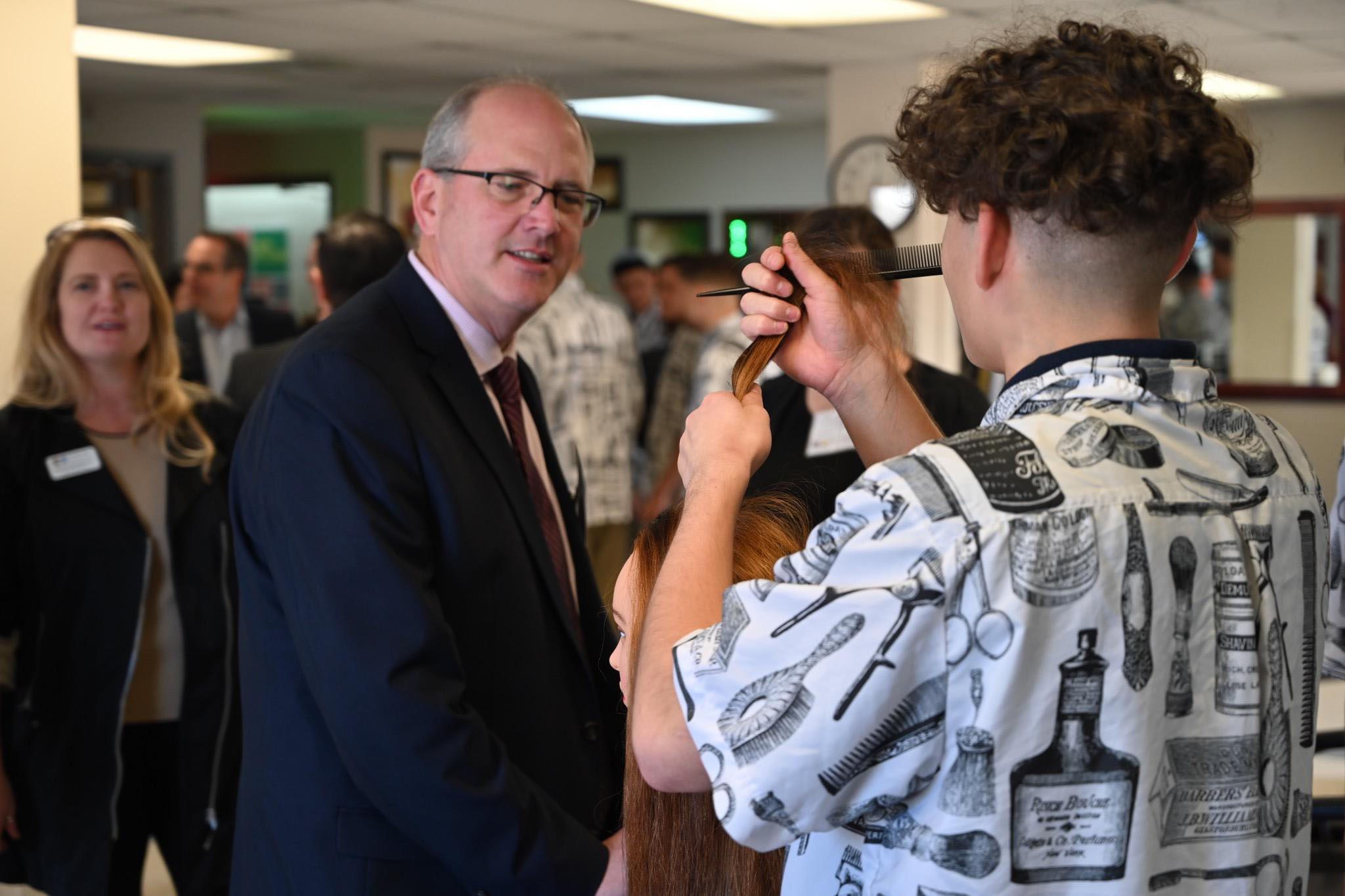
U.S. Department of Education Assistant Secretary Scott Stump recently toured a juvenile facility in Colorado as part of the Face to Face initiative, which is designed to connect policymakers with people closest to corrections systems.
Assistant Secretary Stump oversees the U.S. Department of Education’s office of career, technical, and adult education. In Colorado, he visited workforce development courses, including barbering, construction, and silk screening. He also met with state and local leaders about efforts to prepare youth and young adults to succeed in the workforce upon release.
Staff at The Council of State Governments Justice Center accompanied Stump on his visit and had the chance to ask him a few questions about the importance of workforce development training for students in the juvenile justice system.
Why is providing workforce development training to incarcerated youth and young adults an issue that the average American should care about?
I firmly believe that providing incarcerated men, women, youth, and young adults with in-demand skills and industry certifications is one of the best ways that we can serve these learners and get them back on track and headed in a positive and productive direction. President Trump summed it up perfectly in 2018, stating that “Our whole nation benefits if former inmates are able to reenter society as productive, law-abiding citizens… If we want more prisoners to take charge of their own lives, then we should work to give them the tools to stand on their own two feet… America is a nation that believes in the power of redemption. America is a nation that believes in second chances.”
What are some of the biggest challenges to ensuring that young people in the juvenile justice system can successfully enter the workforce later in life?
From my office’s work with the Juvenile Justice Reentry Program, we know that employment challenges often intensify after youth are released from corrections facilities. Many of the young people struggle to secure and maintain employment due to transportation challenges and other issues that can be mitigated with proactive wrap-around services.
How is the federal government helping incarcerated young people access education, job training, and workforce development services that will help them find employment in the community? Are there specific areas where you’d like to make improvements?
The Office of Career, Technical, and Adult Education implements two grant programs for states: the Perkins Act, which provides resources for career and technical education, and the Adult Education and Family Literacy Act, which provides resources for youth to complete a high school diploma or equivalent.
Each of these programs allows states to set aside a percentage of their grant for educating incarcerated youth. As states are developing their plans for using this grant money, we have encouraged them to rethink their work and commitment in this space. We have asked: “How can we help more students in correctional education master basic and occupational skills at the same time? How can we help them all earn the credentials they need faster? How can we better incorporate technology into correctional education?”
How are states and local jurisdictions helping young people in secure facilities further their education or prepare for employment? What can states and local jurisdictions do better in this arena?
In the fall of 2018, I had the opportunity to meet with a formerly incarcerated student in Oklahoma. This student was on a path to success due to a partnership between Oklahoma’s Department of Career and Technology Education and its Office of Juvenile Affairs. He was able to earn NCCER construction certifications and complete his high school diploma requirements while confined to a juvenile corrections facility. Upon release, he was immediately hired for a job in the construction industry and has continued to stay out of the justice system and maintain employment.
Innovative partnerships among state and local education, career and technical education, and juvenile justice systems can help young people turn their lives around and find new passions.
Why should employers hire young people who have been incarcerated?
Given the current shortage of talent across the nation and across all industries, it is time for employers to focus more on the skills that a young person can bring to the job than on a mistake that was made in the past. The Society for Human Resource Management (SHRM) has recently launched the Getting Talent Back to Work initiative that focuses on encouraging employers to, “pledge to consider all qualified applicants,” including those that have been incarcerated.
To learn more about this topic and what states are doing to prepare youth in the juvenile justice system for employment, read On Track.
Face to Face, a project led by The CSG Justice Center, creates meaningful interactions between policymakers and people who have firsthand experience with the criminal justice system.












